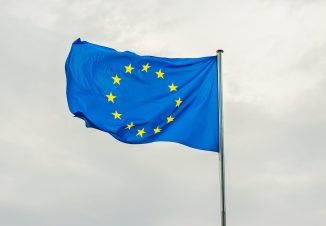
In the next few days (from 4 May 2020 until 18 May 2020), Italy is going to start Phase 2 of its coronavirus management strategy in which there will be a gradual return to working activities. As indicated by the government, this should take place in complete safety, with employers following the provisions of the public and health authorities.
The resumption of business activities will be adapted to respect and implement the ‘Shared Protocol for the fight against Covid-19 in the workplace’, as agreed on 24 April by the Government and unions and then included in the Presidential Decree of 26 April 2020 governing Phase 2.
The measures provided include:
Both the provision of information, for employees and third parties, and specific training for workers, should be highly emphasised and prioritised both in relation to the procedures adopted and to the behaviour workers should adhere to during work time.
Each company will have to organise its own reopening, in view of the fact that there is no single way of working that is valid for everyone and that each organisation will have to adapt the protocol to its own specific situation.
Monitoring by the Labour Inspector will be rigorous and regular, as stated in Ministry Guidelines for Inspection and the Technical Document on the measures.
The reopening of organisations’ activities is also linked to the implementation of the ‘Technical document on the possible remodulation of measures to contain SARS-CoV-2 infection in workplaces and prevention strategies’ published by INAIL (the National Institute for Insurance against Accidents at Work) which has been submitted to the Government. This would be the source for the next wave of prevention measures to be implemented for the expected Phase 2.
This Technical Document aims to provide the Government with information, including of a statistical nature, useful for evaluating and determining the levels of priority for interventions arising from the resumption of activity during Phase 2, as well as intervention strategies to be implemented in the workplace.
The Technical Document is in two parts: the first part contains a useful analysis for defining the scope of risk and identifying which risk area each employee falls in according to his or her employment. The second part, on the other hand, contains general guidelines for risk reduction in the workplace. The Technical Document further confirms use of ‘remote (and therefore, the use of smart working working) in the ‘transition phase’.
The Document also underlines the importance of guaranteeing social distancing where it is not possible to use remote working (as already stated in the numerous government measures issued), especially with reference to activities that cannot be carried out using@ smart working.
A further measure of the INAIL document concerns equipping all workers with personal protective equipment (PPE) such as masks and gloves. On this point, it should be noted that the responsibility for providing PPE to workers lies exclusively with the employer.
Each organisation must therefore set up an internal committee, formed by representatives of employers and employees and the competent doctor, which will meet periodically to monitor the effectiveness of the actions taken and, if necessary, to amend or confirm them. This vigilance, which must be very thorough, must cover the management of spaces, sanitation procedures, changes to production levels and the management of any employee symptoms.
The adoption of all these measures will also be very important because the Government and INAIL have made it clear that employees, who have contracted the virus in the workplace, will be considered absent because of a workplace ‘accident’ and not because of ‘illness’, meaning the employer is responsible for demonstrating that it had put in place all the appropriate preventive measures.
Adopting all the above measures will inevitably lead to an increase in the organisation’s expenses/ It will, however, also ensure the implementation of a safety and prevention system that protects employees and the organisation from any possible actions of liability or damage compensations.
Failure to apply these measures will entail financial sanctions up to suspension of the activity in case of violation.
New measures will be prepared after the first two weeks of operation of the Phase Two programme.


